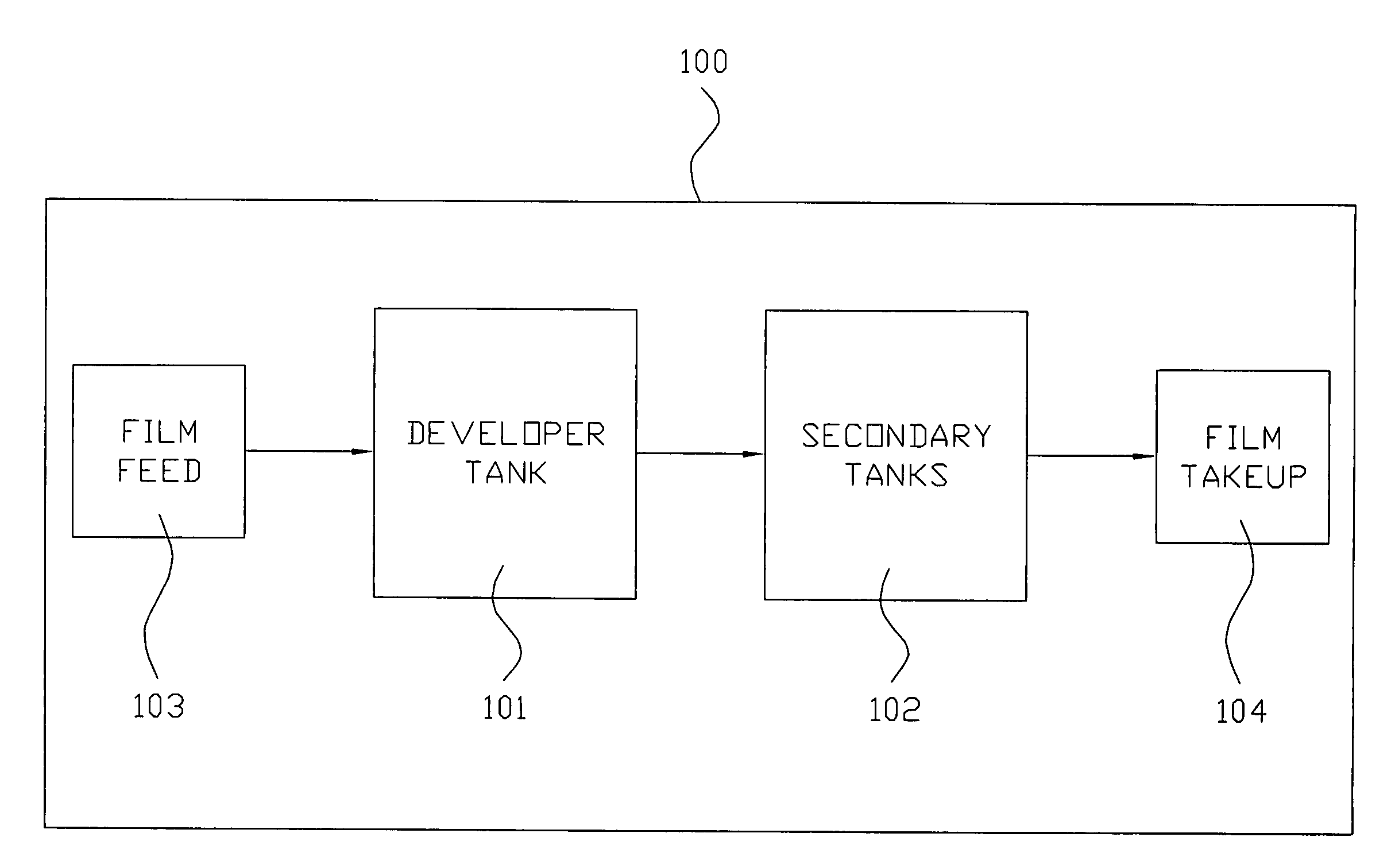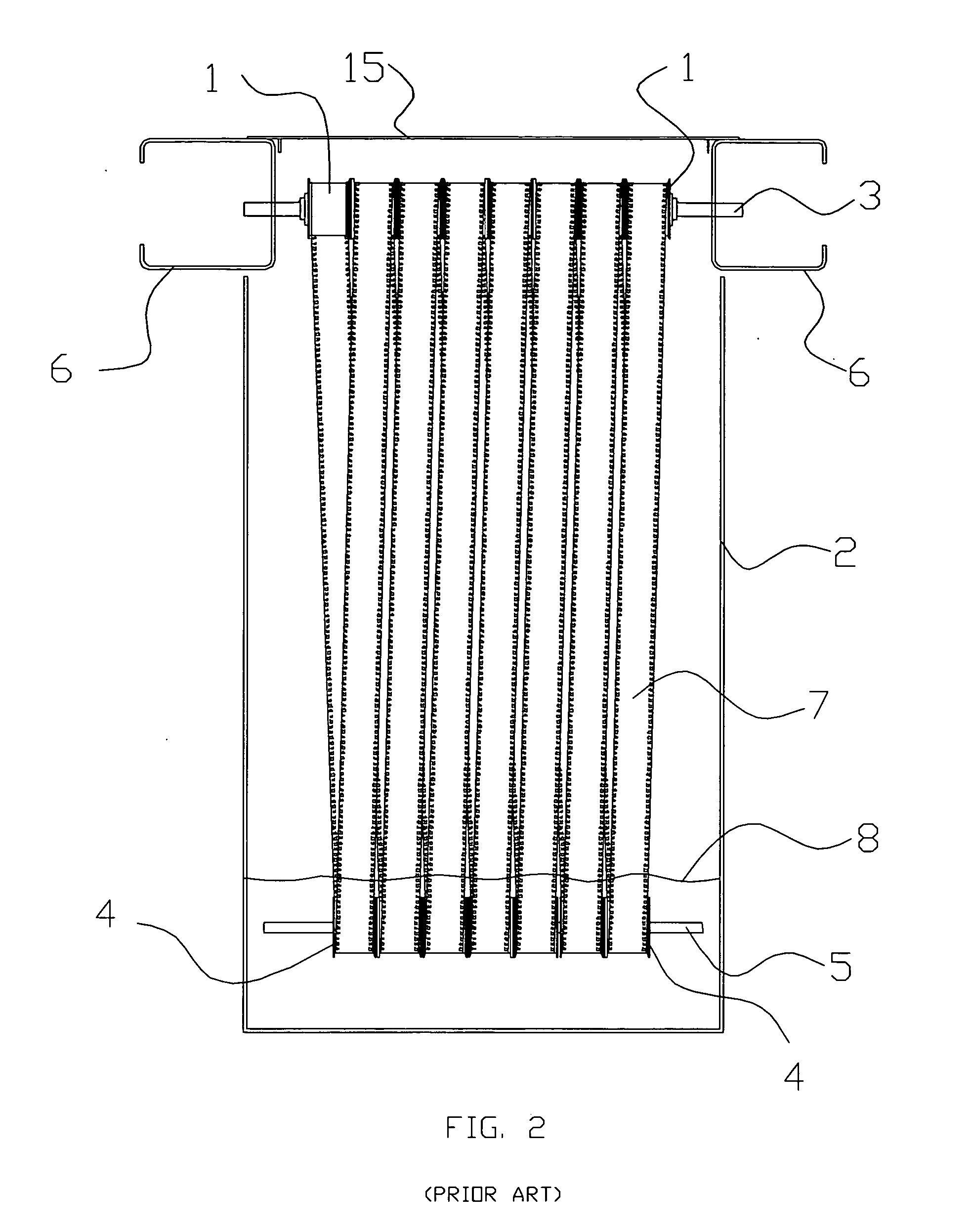High speed motion picture film processor
a high-speed, film-processing technology, applied in the direction of optics, instruments, photosensitive materials, etc., can solve the problems of severe vibration in the processor, excessive film tension, and increase in film tension or drag, so as to minimize the leakage of non-reactive gas
- Summary
- Abstract
- Description
- Claims
- Application Information
AI Technical Summary
Benefits of technology
Problems solved by technology
Method used
Image
Examples
Embodiment Construction
[0032]In accordance with the present invention, a high speed motion picture film developer is disclosed that can be represented in a simplified schematic diagram as shown in FIG. 10. The high speed motion picture film developer, shown generally as 100, has a film feed 103 to developer tank 101 and then secondary tanks 102 and a film takeup 104.
[0033]The present invention will now be described in connection with several especially preferred embodiments that illustrate various aspects of the inventive concepts described herein. In the Figures and the following more detailed description, numerals indicate various features of the invention, with like numerals referring to like features throughout both the drawings and the description. Although the Figures are described in greater detail below, the following is a glossary of the elements identified in the Figures:[0034]1 Sprocket[0035]2 Tank[0036]3 Sprocket Shaft[0037]4 Roller[0038]5 Roller Shaft[0039]6 Beam[0040]7 Film[0041]8 Solution L...
PUM
 Login to View More
Login to View More Abstract
Description
Claims
Application Information
 Login to View More
Login to View More - R&D
- Intellectual Property
- Life Sciences
- Materials
- Tech Scout
- Unparalleled Data Quality
- Higher Quality Content
- 60% Fewer Hallucinations
Browse by: Latest US Patents, China's latest patents, Technical Efficacy Thesaurus, Application Domain, Technology Topic, Popular Technical Reports.
© 2025 PatSnap. All rights reserved.Legal|Privacy policy|Modern Slavery Act Transparency Statement|Sitemap|About US| Contact US: help@patsnap.com



